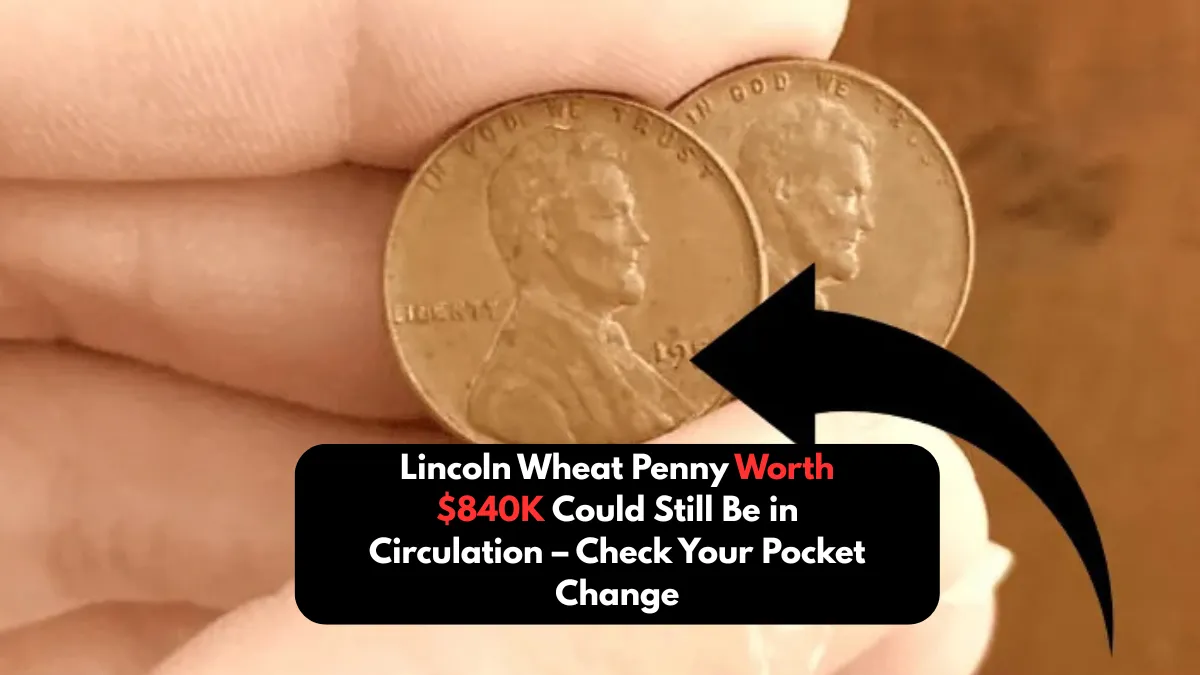Did You Know That a Lincoln Wheat Penny Worth $840,000 Was Once Sold at Auction?
Most people see pennies as spare change, but some Lincoln Wheat Pennies are actually worth a small fortune. In one remarkable case, a rare penny sold at auction for a staggering $840,000. What makes this even more exciting is that these valuable coins might still be out there today. You could find one hiding in a jar of change or tucked away in a forgotten drawer. It’s a thrilling thought that something so valuable could be hiding in plain sight.
What Makes the Lincoln Wheat Penny Special?
The Lincoln Wheat Penny made its debut in 1909 to commemorate the 100th birthday of Abraham Lincoln. On the front of the coin is Lincoln’s profile, while the back shows two stalks of wheat, which is where the coin gets its nickname. This classic design was in use until 1958.
While the majority of these coins are still common and easy to find, a few versions stand out due to rare minting errors or very limited production, which makes them highly sought after by collectors and enthusiasts alike.
The $840,000 Penny
A particularly famous Lincoln Wheat Penny is the rare 1943 copper version. During World War II, the U.S. Mint began producing pennies from steel to conserve copper for military use. Despite the switch, a few copper planchets were mistakenly used in the presses, resulting in a small batch of 1943 copper pennies. These copper coins are incredibly rare, and when one surfaced in pristine condition, it sold at auction for an astonishing $840,000. Experts believe only 20 to 40 of these unique coins exist today, which is why collectors are always on the lookout for them.
How to Identify a Valuable Lincoln Wheat Penny
Finding a rare Lincoln Wheat Penny involves knowing what to look for. Start with the date—if the penny is from 1943 and appears copper-colored, it’s worth a closer look. Most 1943 pennies were made from steel and have a silver appearance. If your 1943 penny is brown or copper-toned, it could be one of the rare copper versions. You can also do a quick magnet test—steel pennies will cling to a magnet, while copper ones won’t. In addition to 1943, keep an eye out for other valuable years like the 1909-S VDB, 1914-D, 1955 Doubled Die, and the 1922 No D, as these are also worth significantly more than face value.
Where Could You Find One?
These rare Lincoln Wheat Pennies might be hiding in places you wouldn’t normally think to check. Take a look through old jars of change, childhood piggy banks, or boxes from estate and garage sales. Some people even search through rolls of pennies from the bank, hoping to discover a valuable coin among the ordinary ones.
Inherited coin collections can also be a surprising source of hidden gems. You don’t need to be a professional collector to find one—just a little curiosity and patience could lead to a lucky discovery.
What to Do If You Find a Rare Penny
If you think you’ve found a valuable Lincoln Wheat Penny, it’s important to handle it with care. First, resist the urge to clean it, as this can damage the coin’s surface and significantly reduce its value. Always handle it gently, preferably with gloves, and only touch the edges to avoid leaving fingerprints.
Store the coin in a protective holder to prevent it from getting scratched or worn. Most importantly, get it authenticated by a trusted coin grading service like NGC or PCGS to confirm its rarity and condition. When you’re ready to sell, it’s best to go through a reputable coin dealer or auction house to ensure you get the best price.
Final Thoughts
Finding a Lincoln Wheat Penny worth $840,000 may sound like a dream, but it’s not impossible. These rare coins are still out there, waiting to be found by someone with a keen eye and a little luck.
Whether it’s in your pocket change, a forgotten collection, or a roll of coins from the bank, treasure could be just around the corner. Take a moment to check those coins—you never know when you might stumble upon a hidden gem that turns out to be worth a fortune.
John M. Moody is a passionate writer known for his insightful and engaging storytelling. With a background in astrology and a love for exploring the human experience, John weaves cosmic wisdom into compelling narratives that inspire and enlighten. His work spans articles, essays, and spiritual guides, often blending mystical themes with real-life reflections. When he's not writing, John enjoys stargazing, reading mythology, and connecting with nature for creative inspiration.
